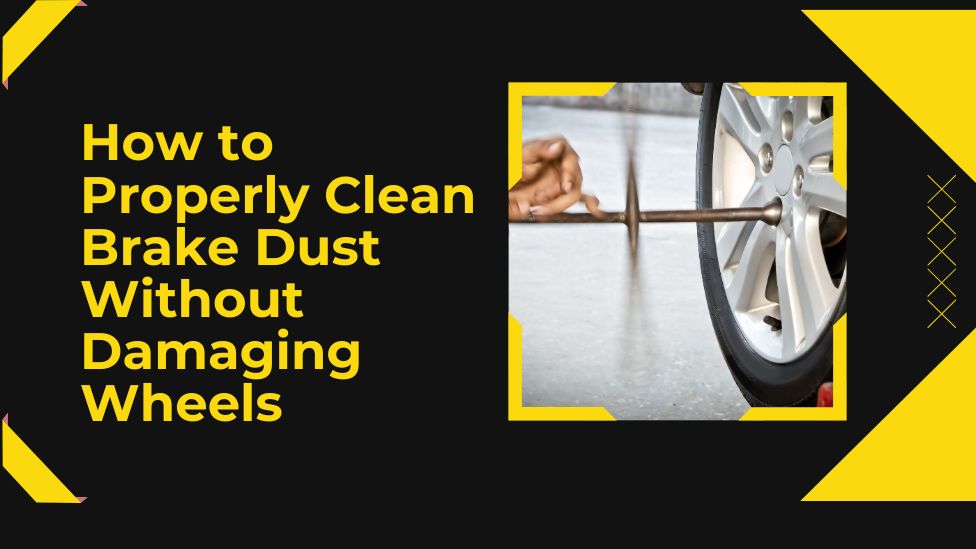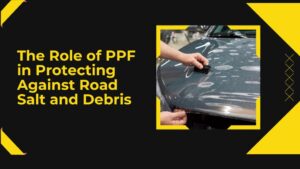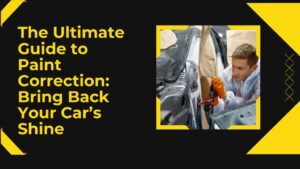Keeping your wheels clean isn’t just about aesthetics—it’s about performance, safety, and prolonging the life of your car’s components. Brake dust is a stubborn byproduct of your vehicle’s braking system and, if left unchecked, can corrode and discolor your wheels over time. In this article, we’ll walk you through a safe and effective process to remove brake dust and share essential wheel cleaning tips to maintain your vehicle’s shine and integrity.
What is Brake Dust and Why Should You Clean It?
Brake dust is a combination of iron particles, carbon fibers, adhesive residues, and other metallic materials that are released during braking. These tiny particles settle on your wheels and, when exposed to moisture and heat, can become corrosive. Over time, this build-up can etch into your wheel’s clear coat or metal, causing permanent damage.
Cleaning brake dust regularly not only preserves your wheels but also helps your entire vehicle look cleaner and more maintained.
How Often Should You Clean Your Wheels?
Ideally, wheels should be cleaned every 1 to 2 weeks, especially if you drive frequently or in high-traffic areas. Frequent cleaning prevents dust build-up from becoming embedded into the wheel’s finish.
Essential Tools and Products for Brake Dust Removal
Before you get started, gather the necessary tools and products:
- A quality brake dust cleaner
- Soft-bristled wheel brush
- Microfiber towels or wheel mitt
- Pressure washer or garden hose
- pH-balanced car shampoo (optional for added protection)
- Wheel protectant or sealant
Step-by-Step Guide: How to Clean Brake Dust Properly
Step 1: Rinse the Wheels Thoroughly
Start by rinsing off your wheels with a strong jet of water to remove loose dirt, grime, and some surface brake dust. A pressure washer works best for this, but a hose with a high-pressure nozzle can also do the trick.
Step 2: Apply the Brake Dust Cleaner
Choose a non-acidic, pH-balanced brake dust cleaner specifically designed for your type of wheels (alloy, chrome, painted, etc.). Spray the cleaner generously onto a cool, dry wheel and let it sit for 2–5 minutes. During this time, the cleaner breaks down the iron and grime particles.
Look for color-changing formulas—these are often iron removers that turn purple as they react with brake dust, showing you they’re working.
Step 3: Agitate with a Wheel Brush
Use a soft-bristled brush to agitate the cleaner. Make sure you reach all crevices, lug nut areas, and the inside barrel of the wheel. For tight spots, consider using a detailing brush or foam applicator.
Avoid hard-bristle brushes or abrasive pads that can scratch your wheel’s finish.
Step 4: Rinse Off the Cleaner
Once scrubbed, rinse thoroughly with water, ensuring no cleaner is left behind. Residue can cause spotting or damage if it dries on the wheel.
Step 5: Dry and Inspect
Use a clean microfiber towel to dry the wheels completely. This prevents water spots and gives you a chance to inspect your work. If any brake dust remains, repeat the process on those areas.
Additional Wheel Cleaning Tips
- Clean one wheel at a time to prevent the cleaner from drying out and causing stains.
- Avoid washing your wheels when they’re hot (such as right after driving), as heat can cause cleaners to evaporate too quickly and leave residue.
- Never use household cleaners like bleach or degreasers—they’re too harsh and can ruin the wheel’s coating.
- Use a dedicated wash bucket and tools for your wheels to avoid cross-contamination with your car’s paintwork.
- After cleaning, apply a wheel protectant or ceramic coating to make future cleaning easier and to protect against corrosion and dust build-up.
Choosing the Right Brake Dust Cleaner
With countless options available, choosing the best brake dust cleaner can be overwhelming. Here are a few tips to help:
- pH-neutral: Gentle on all wheel types, especially important for polished or clear-coated finishes.
- Iron-removing: Look for iron-reactive formulas that dissolve brake dust chemically.
- Non-corrosive: Ensure the cleaner doesn’t contain strong acids or alkalis that could damage your wheels or brake components.
Benefits of Regular Wheel Maintenance
Proper wheel care not only enhances your car’s appearance but also offers several functional advantages:
- Prevents long-term damage from corrosive brake dust
- Maintains resale value by keeping the wheels in excellent condition
- Reduces the risk of rust or pitting, especially on chrome or bare-metal wheels
- Ensures better performance from braking systems by preventing residue build-up
Common Mistakes to Avoid
While cleaning your wheels seems straightforward, avoid these common mistakes:
- Skipping regular cleaning: Waiting too long between cleanings allows brake dust to bond with the surface.
- Using abrasive tools: These can scratch or strip the finish off your wheels.
- Not rinsing thoroughly: Residue from cleaner or soap can be as harmful as the dirt you’re trying to remove.
- Applying tire shine to wet tires: This can cause sling, making your clean wheels dirty again within minutes of driving.
Final Thoughts
Your wheels take a beating from road grime, heat, and brake dust daily, making them one of the most abused parts of your vehicle. Using the right brake dust cleaner, proper tools, and following proven wheel cleaning tips ensures you not only preserve the look of your car but also protect its long-term value. Make wheel care a part of your regular detailing routine, and you’ll enjoy safer driving with a vehicle that looks sharp and performs at its best.



